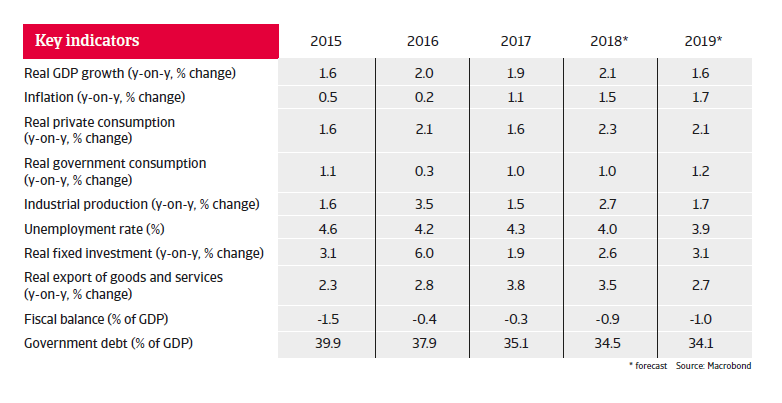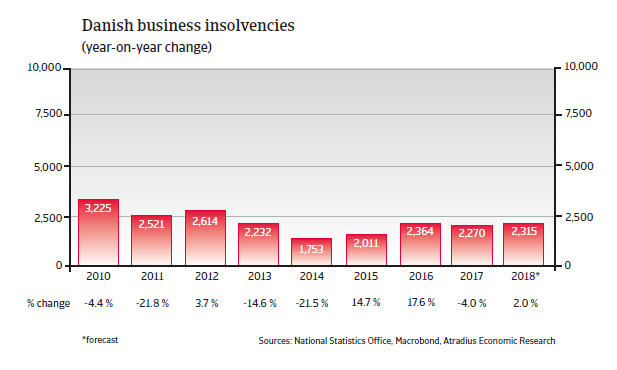The Danish economy has regained some of its international competitiveness due to structural reforms that addressed the issue of high labour costs.



The insolvency environment
Insolvency increase expected in 2018
Danish business insolvencies increased sharply in 2015 and 2016 due to the introduction of a new form of company in official statistics and the clearing of a backlog of insolvencies. It is expected that business failures will increase slightly this year, to about 2,315 cases.

Economic situation
Robust domestic demand sustains growth
The Danish economy is expected to grow by about 2% in 2018, driven by robust domestic demand, with private consumption and investment picking up.
Private consumption is sustained by historically low interest rates, rising disposable incomes and moderate inflation.
Household debt has decreased since 2014, but remains high at more than 240% of disposable income. However, credit conditions have been tightened for borrowers with very high liabilities. This should help reduce the chances of a housing bubble, especially in the Copenhagen area.
The export performance is expected to remain robust with 3.5% growth forecast in 2018. The Danish economy has regained some of its international competitiveness due to structural reforms that addressed the issue of high labour costs.
Brexit could have a negative impact on exports, as the United Kingdom is Denmark’s 4th largest export market.
Public finances are healthy, with government debt below 35% of GDP. This provides room for fiscal stimulus if required.


